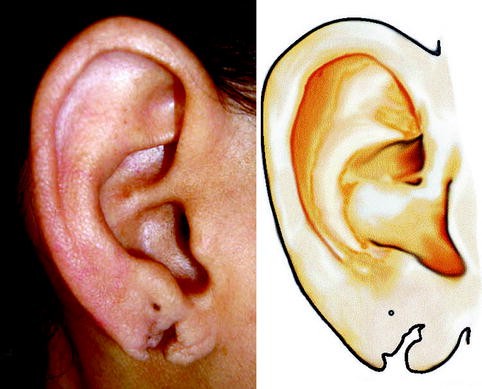In order to have full access of this Article, please email us on thedocumentco@hotmail.co.uk
Cartilaginous replacement for Auricular restoration

Table of Contents
Abstract 3
Introduction 4
Autologous auricular reconstruction 4
Prosthetic Reconstruction 6
Implant Reconstruction 6
Limitations of current auricular reconstructive techniques 7
Donor site morbidity 7
Biomaterials and tissue engineering 9
Tissue Engineering Problems 10
Conclusion 10
References 12
Abstract Cartilaginous replacement for Auricular restoration
A malformation of the ear which results due to congenital or acquired condition, ear reconstruction is a procedure to correct it. This operation can be of a single procedure or multistage with multiple approaches. We require multiple procedures to reconstruct an ear by using tissues and/or adjuncts of the patients.
Before the child commencing school some of the reconstructive procedures in children congenital condition are planned to be completed fully to avoid teasing from other children and to lessen the time away from school. For the reconstructive plastic surgeons, one of the greatest challenges is the external ear reconstruction for congenital deformity such as microtia.
They face a highly complex problem in reconstructing the intricate ear framework. A material which is durable, inert and resistant to scar contracture is required. The ear has a shapely elastic cartilage which does not perfectly mimics with any material, autologous or prosthetic. A framework is created for the overlying tissues this the current procedure involving autologous costal cartilage.
But this is related with donor-site morbidity, all around the world few surgeons are skilled in the techniques used to obtain positive results. Many alloplastic materials have also been used as a framework. The results are usually non-satisfactory as the degree of extrusion, infection and immunogenicity are expected. There is no significant progress in Tissue-engineered cartilage, which is an alternative approach due to which many problems remain.
Before making the routine clinical applications possible these need to be addressed. At present, the tissue-engineered techniques are fragile and nonflexible but its next generation shows potential with material which increases cell growth and integration, and the stem cell application present in a clinical setting. Recently the world’s first entirely synthetic trachea has been composed of a novel nanocomposite material which is seeded with the patient’s own stem cell. This transplant took place at the Karolinska Hospital in Sweden which explains into a tissue-engineered auricle in the future.
Introduction
The external ear congenital malformations are rare birth defects with long-term effects for children and families. It affects the patient physically and emotionally. Parents usually assume that they have caused this deformity and experience feelings of guilt. School going children get teased and ridiculed by other children. Patient with such deformity bear hearing loss which causes learning difficulties as well.
In the external form of the ear, the auricular malformation exists from anotia to the mild alteration. The reconstructive techniques and audiological rehabilitation are continuously improving and benefiting the patients. The surgeons who were involved in microtia repair already knew the difficulty of constructing a natural looking ear. Those difficulties were 2-fold and construction of biocompatible, rigid framework along with the coverage of skin.
There is no alternative for the thin flexible auricular cartilage. Similarly, no alternate skin is available of same quality and elasticity for the covering of auricle. Providing a good amount of relief in the helix, scaphoid fossa and anti-helix will create an illusion of thin skin overlying cartilage is one key to successful reconstruction. The problems in achieving the desired quality results for the surgeons are thick skin, hair-bearing skin and poor quality of cartilage.
Some other problems in reconstruction of the auricle are the proper alignment of a reconstructed ear in relation to the opposite ear, constructing a postauricular sulcus, providing the projection of the auricle from the head and recreating a natural looking lobule and tragus…

Recent Comments